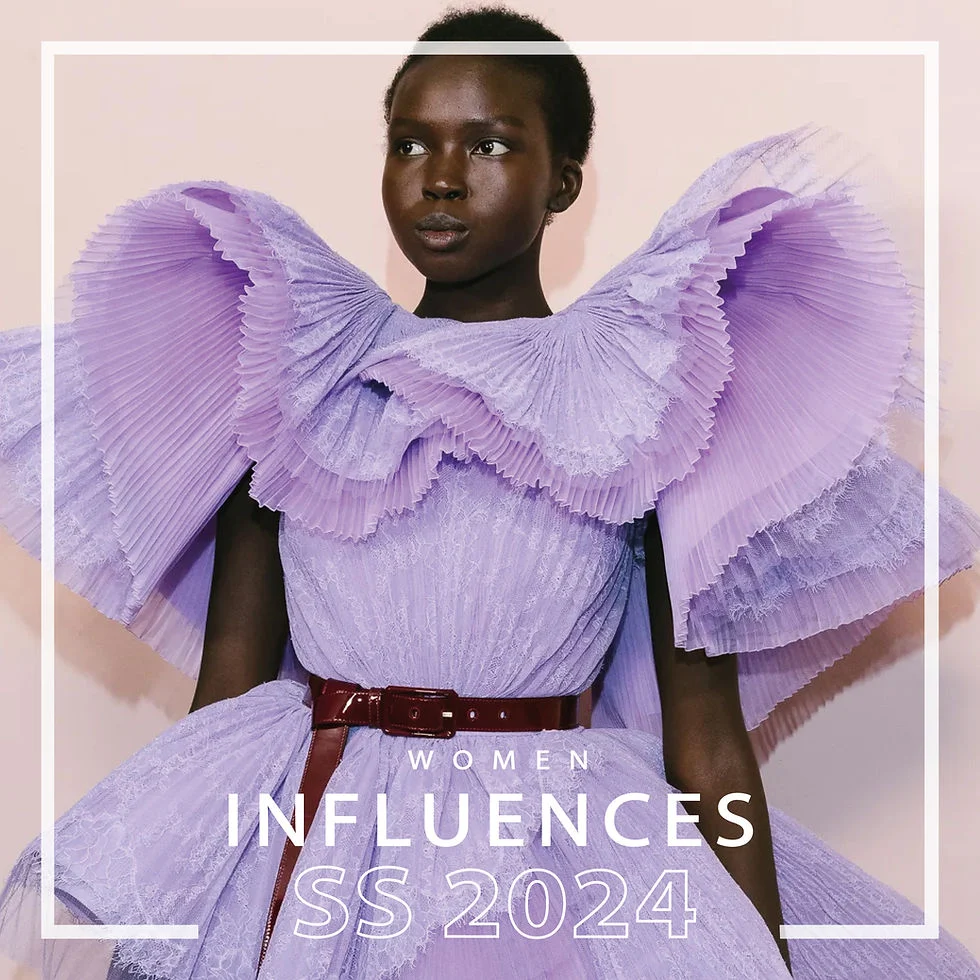The Influence of Technology on Modern Fashion Design is undeniable, as advancements in technology have greatly impacted the way fashion is created, produced, and consumed. From 3D printing to virtual reality, technology has opened up new possibilities for designers to experiment with innovative materials, techniques, and aesthetics. This has led to the emergence of futuristic and tech-infused designs that push the boundaries of traditional fashion.
In addition to its impact on the design process, technology has also revolutionized the way fashion is marketed and sold. E-commerce platforms, social media, and digital marketing strategies have transformed the way consumers discover and purchase fashion items. Virtual fashion shows and digital try-on experiences have also become popular, offering a new way for consumers to engage with and experience fashion.
Moreover, sustainability and ethical production have become increasingly important in the fashion industry, and technology has played a crucial role in addressing these issues. From using sustainable materials to implementing efficient production processes, technology has enabled designers to create fashion in a more environmentally and socially responsible manner.
Furthermore, the rise of wearable technology has blurred the lines between fashion and function, giving rise to a new category of “smart” clothing and accessories. From fitness trackers to smart watches, technology has become seamlessly integrated into the world of fashion, catering to the needs and lifestyle of modern consumers.
Overall, the influence of technology on modern fashion design is multifaceted, impacting every aspect of the industry from design and production to marketing and consumption. As technology continues to advance, it will undoubtedly shape the future of fashion in ways we have yet to imagine.
The Evolution of Technology in Fashion Design
Technology has significantly impacted the field of fashion design, revolutionizing the way designers create, produce, and showcase their work. With the advancement of computer-aided design (CAD) software, designers are able to sketch, render, and manipulate their designs with greater precision and efficiency. Additionally, 3D printing technology has opened up new possibilities for creating intricate and avant-garde garments that were previously impossible to achieve through traditional methods.
Furthermore, the integration of technology in textile production has led to the development of innovative fabrics and materials, such as smart textiles that can change color or temperature in response to environmental stimuli. These advancements have not only expanded the creative possibilities for fashion designers but also have the potential to make garments more functional and sustainable.
The Impact of Social Media and Digital Marketing on Fashion
Social media and digital marketing have transformed the way fashion designers promote and sell their collections. Platforms like Instagram, Pinterest, and TikTok have become essential tools for designers to showcase their work, connect with their audience, and receive instant feedback. The direct access to consumers through social media has also disrupted traditional fashion cycles, as designers can now bypass traditional retail channels and sell directly to their followers.
Moreover, the rise of e-commerce and online fashion platforms has enabled designers to reach a global audience, breaking down geographical barriers and expanding their customer base. This shift towards digital marketing and online sales has forced fashion designers to adapt to new business models and strategies, emphasizing the importance of a strong online presence and brand identity.
The Role of Virtual and Augmented Reality in Fashion Design
Virtual and augmented reality technologies have been increasingly utilized in the fashion industry, offering immersive experiences for both designers and consumers. Designers can now create virtual showrooms and runway presentations, allowing them to showcase their collections in a digital environment. This not only reduces the need for physical samples and prototypes but also provides a new level of creativity and storytelling for fashion presentations.
On the consumer side, virtual and augmented reality have been integrated into shopping experiences, allowing customers to virtually try on garments and accessories before making a purchase. This has not only enhanced the online shopping experience but has also addressed the issue of sizing and fit, ultimately reducing the rate of returns and exchanges for fashion brands.
Sustainability and Technological Innovations in Fashion
Technology has played a crucial role in driving sustainability within the fashion industry. From the development of eco-friendly materials to the implementation of more efficient production processes, technological innovations have enabled fashion designers to create with a reduced environmental impact. For example, the use of 3D body scanning technology has allowed for more accurate and personalized garment production, minimizing waste and overproduction.
Additionally, advancements in recycling and upcycling technologies have facilitated the repurposing of old garments and materials, contributing to a circular economy within the fashion industry. With the help of technology, designers are able to explore new methods of creating sustainable fashion without compromising on creativity or quality.
Artificial Intelligence and Data Analysis in Fashion Design
The integration of artificial intelligence (AI) and data analysis has revolutionized the way fashion designers understand consumer behavior and preferences. By utilizing AI algorithms and big data, designers can gain valuable insights into market trends, customer demographics, and purchasing patterns, allowing them to make more informed design and business decisions.
AI has also been used to optimize supply chain management and production processes, leading to greater efficiency and cost-effectiveness for fashion brands. By automating repetitive tasks and predicting demand, AI technology has the potential to streamline the entire fashion design and production pipeline.
Personalization and Customization Through Technology
Advancements in technology have empowered fashion designers to offer personalized and customized experiences for their customers. Through the use of virtual fitting rooms and customization tools, consumers can now tailor garments to their specific measurements and style preferences, creating a more intimate and engaging shopping experience.
Furthermore, the rise of made-to-order and on-demand production models, made possible by technology, has allowed designers to reduce excess inventory and waste, while offering unique and personalized products to their clientele. This shift towards personalization has redefined the traditional fashion model, emphasizing individuality and inclusivity in the design process.
Collaborations Between Fashion and Tech Companies
The collaboration between fashion and technology companies has led to groundbreaking innovations and products that merge the worlds of fashion and tech. From wearable technology, such as smartwatches and fitness trackers, to fashion-forward tech accessories, these partnerships have blurred the lines between fashion and functionality.
Additionally, tech companies have worked with fashion designers to incorporate tech elements, such as LED lights and interactive features, into garments and accessories, creating a new realm of interactive and futuristic fashion. These collaborations have not only pushed the boundaries of creativity but have also introduced new possibilities for how technology can be integrated into everyday fashion.
The Future of Fashion Design and Technology
As technology continues to advance at a rapid pace, the future of fashion design holds infinite possibilities. From the exploration of sustainable and biodegradable materials to the use of artificial intelligence in predicting fashion trends, the convergence of fashion and technology is expected to shape the industry in unprecedented ways.
Furthermore, the rise of virtual fashion experiences, digital clothing, and virtual influencers presents a new frontier for creativity and expression within the fashion world. With technology as a driving force, the boundaries of what is possible in fashion design are constantly being pushed, leading to a future that is both innovative and transformative.
| Aspect | Influence |
|---|---|
| Design Process | Technology has revolutionized the design process in fashion, allowing for digital sketching, 3D modeling, and virtual prototyping. |
| Production | Advancements in technology have led to the automation of production processes, such as 3D printing and computerized pattern cutting, resulting in faster and more efficient manufacturing. |
| Materials | New materials and textiles have been developed through technological innovation, including smart fabrics, sustainable materials, and performance-enhancing textiles. |
| Marketing and Retail | E-commerce platforms, virtual reality fitting rooms, and social media have transformed the way fashion is marketed and sold, creating new opportunities for designers and brands. |
The influence of technology on modern fashion design is undeniable. From the design process to production, materials, and marketing, technology has revolutionized every aspect of the industry, leading to innovation, efficiency, and new possibilities for designers and consumers alike.



